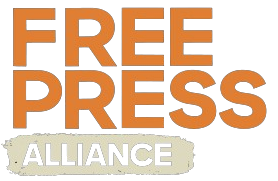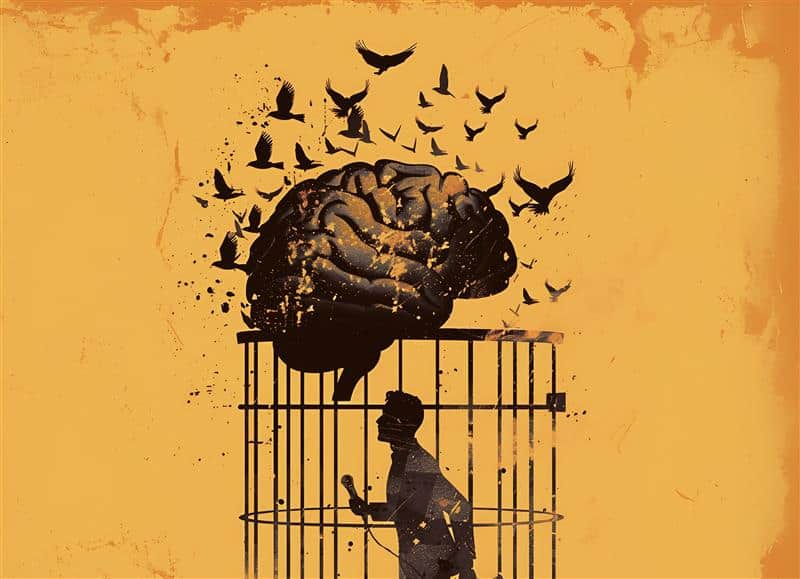Reporting on difficult topics such as war, trauma, accidents, or assassinations can pose significant mental health challenges for journalists. Many who choose this profession are aware of these risks from the start. However, journalism is often idealized as a vocation rooted in truth-seeking and public service, leaving little room to acknowledge its emotional toll. Behind the bylines and breaking news, many journalists quietly struggle with stress, burnout, and trauma, a reality that deserves greater attention and open discussion within the industry.
Journalism as high-risk work
Journalism in the frontline is a difficult task, because reporters covering war, disasters, crime, or political repression often face the same psychological risks as first responders. For example, imagine this: it’s 3 a.m. A reporter receives a tip of a mass casualty accident. She races through traffic to the site. Bodies are being recovered. Families wail. Sirens and chaos. She takes notes, records interaction, photographs, records video. She goes home hours later, shaken. Sleep comes fitfully. The image replays in dreams. Weeks later, in internal meetings, colleagues tell her she should be able to “move on,” that covering traumatic stories is “part of the job.”
This day, like many others, adds up. The emotional cost is rarely acknowledged.
The silent toll of trauma and burnout
Over recent years, a growing body of research has shown that journalism carries significant risks to mental health, risks far greater than many within and outside the profession realize. Yet, as mentioned before, the trauma and burnout associated with this work often remain unspoken or suppressed.
- Trauma exposure is pervasive across journalism. Studies indicate that up to 95% of journalists have been exposed to potentially traumatic events, such as witnessing death, injury, or violence, or receiving threats against themselves or their families. (Horodyski, A & Lilly, M., 2023)
- PTSD, burnout, and depression are common among journalists. A large-scale study of 684 conflict reporters found significant levels of PTSD symptoms, including intrusive memories, avoidance, and hyperarousal. Similarly, journalists who repeatedly covered the COVID-19 pandemic showed heightened psychological distress and trauma-related symptoms. (Feinstein et al., 2018)
- Online harassment and moral injury have emerged as additional threats. Research on Canadian journalists found that frequent online abuse strongly correlates with higher rates of anxiety, depression, PTSD, and moral injury. (Feinstein et al., 2025)
- Gender, race, and identity shape vulnerability. Women journalists, journalists of color, and those reporting from conflict zones or under threat face compounded risks, not only from exposure to violence but also from systemic harassment and discrimination. (Physician’s Briefing Staff, 2013)
- Organizational and cultural factors within newsrooms exacerbate mental health challenges. Long hours, tight deadlines, lack of managerial support, limited training, and persistent stigma around mental health all increase the likelihood of serious psychological strain. (Smith et al., 2017)
Why mental health is a press freedom issue
Untreated trauma and burnout have far-reaching consequences, not only for individual journalists but for the integrity of journalism itself. When mental health struggles go unaddressed, they lead to attrition, self-censorship, and a weakening of the press’s role as a democratic watchdog. Mental health, therefore, is not a private issue but a foundational pillar of press freedom.
- Credibility and depth of reporting suffer: Journalists coping with trauma or exhaustion may unconsciously self-censor, avoid difficult topics, or simplify complex issues. Coverage of conflict, corruption, or injustice, precisely the stories that matter most, become shallower or disappear altogether.
- Turnover and attrition increase: When journalists are unable to manage chronic stress or trauma, many leave the profession altogether. This results in the loss of experience and expertise, especially in specialized fields like investigative or conflict reporting, ultimately weakening the media’s ability to hold power to account.
- Public trust is at stake: Overworked or unsupported reporters are more prone to errors, sensationalism, and burnout-driven disengagement. As the quality of journalism declines, so too does public confidence in the media.
- Ethical challenges intensify: Journalists often navigate complex moral questions, how to depict suffering, protect sources, or balance the public’s right to know against potential harm. Without awareness or support, they are more vulnerable to moral injury, experiencing guilt, shame, or betrayal related to their reporting.
Stigma and silence in newsrooms
From a war correspondent who omits scenes of abuse from his film because he cannot bear to relive them, to a young reporter who declines to investigate sexual violence knowing the online harassment it will provoke, to an entire newsroom that remains silent about stress and trauma for fear of being seen as “weak” or unprofessional, these are not isolated cases. They are symptoms of a deeper, structural problem.
In many newsrooms, toughness and emotional detachment are still valued as marks of professionalism. Admitting that one is affected by what they witness, or report is too often mistaken for incompetence rather than recognized as a sign of humanity. Without acknowledgment or institutional support, journalists are left to cope in silence. This enduring stigma surrounding mental health not only harms individuals but also weakens the collective resilience of the profession. Breaking it is essential to building healthier, more sustainable newsrooms where care and courage coexist.
Building sustainable journalism
What would the journalism industry look like if it truly embraced mental health as essential? The answer is straightforward: caring for the psychological well-being of media professionals is not an act of charity, it is a prerequisite for the sustainability and integrity of journalism itself.
- Trauma-informed training: Journalists at all levels should receive training to recognize signs of trauma, apply basic self-care techniques, and manage exposure to distressing content. This awareness fosters resilience and prevents long-term harm.
- Organizational policies: News organizations must establish frameworks that ensure emotional safety, such as mandatory debriefings after traumatic assignments, access to mental health professionals, flexible working conditions, and paid leave for recovery when necessary. Workload and deadline management should be recognized as crucial elements of mental well-being.
- Peer support networks: Building internal and cross-newsroom peer support systems enables journalists to share experiences without fear of judgment, mentor one another, and collectively process difficult work. Research shows that collegial support and editorial acknowledgment can significantly mitigate the impact of harassment and trauma. (Kantola & Harju, 2021)
- Leadership commitment: Editors, media owners, and human resources departments must treat mental health not as a luxury but as a core component of sustainable journalism. Budget allocations, organizational culture, and time management should reflect this priority.
- Reducing stigma: Open dialogue about mental health must be encouraged, and seeking help should be normalized rather than penalized. Journalists who disclose their struggles should feel safe, supported, and protected from career repercussions.
- Special focus on vulnerable groups: Women, journalists from marginalized communities, freelancers, and those reporting from conflict zones face distinct challenges. Policies and support mechanisms should address their specific vulnerabilities and provide tailored protection.
Conclusion
Sometimes I think about how every story takes something from the person who tells it. Bearing witness to pain, injustice, or loss inevitably leaves its mark. Journalists are taught to stay detached, but the truth is that no one can remain untouched by what they see.
Journalism is essential, it holds power to account, reveals hidden truths, and gives voice to those who would otherwise go unheard. But it also exacts an emotional price. If we do not acknowledge that cost, support those who pay it, and create work environments that protect not only the story but also the storyteller, journalism risks becoming unsustainable, not just for those who practice it, but for the societies that depend on it.
Caring for mental health is not an act of indulgence; it is an act of preservation, of journalists, of truth, and of democracy itself.
*Note: the references of this article have been updated.
References
Feinstein, A., Owen, J., & Blair, N. (2002). A hazardous profession: War, journalists, and psychopathology. American Journal of Psychiatry, 159(9), 1570–1575. https://doi.org/10.1176/appi.ajp.159.9.1570
Feinstein, A., Storm, H., Mead, J., & Sharkey, A. (2018). An examination of psychological distress and moral injury in journalists exposed to online harassment. European journal of psychotraumatology, 16(1), 2522501. https://doi.org/10.1080/20008066.2025.2522501
Horodyski, A., & Lilly, M., International Society for Traumatic Stress Studies (ISTSS). (2023). Journalists and trauma: Understanding risk, resilience, and recovery. https://istss.org/wp-content/uploads/2024/09/ISTSS-Research-Brief-Journalists-and-Trauma.FINAL_.pdf
Kantola, A., & Harju, A. A. (2021). Tackling the emotional toll together: How journalists address harassment with connective practices. Journalism, 24(3), 494-512. https://doi.org/10.1177/14648849211055293 (Original work published 2023)
Plaisance, P. L., & Skewes, E. A. (2003). Personal and Professional Dimensions of News Work: Exploring the Link between Journalists’ Values and Roles. Journalism & Mass Communication Quarterly, 80(4), 833-848. https://doi.org/10.1177/107769900308000406 (Original work published 2003)
Carrol, M. USC Suzanne Dworak-Peck School of Social Work. (2025). Uncovering the overlooked mental health crisis affecting American journalists. https://dworakpeck.usc.edu/news/uncovering-overlooked-mental-health-crisis-affecting-american-journalists
Smith, R. J., Drevo, S., & Newman, E. (2018). Covering traumatic news stories: Factors associated with post-traumatic stress disorder among journalists. Stress and health : journal of the International Society for the Investigation of Stress, 34(2), 218–226. Covering traumatic news stories: Factors associated with post-traumatic stress disorder among journalists – PubMed
Physician’s Briefing Staff. (2013). Most female journalists have experienced intimidation, abuse. Healthday-en. Most Female Journalists Have Experienced Intimidation, Abuse

